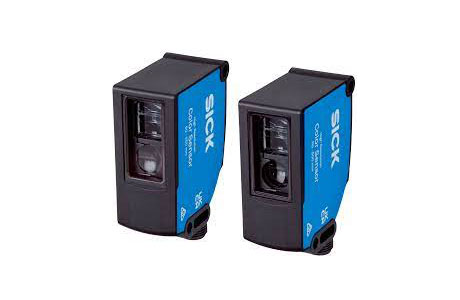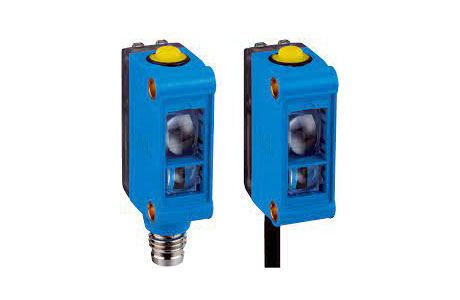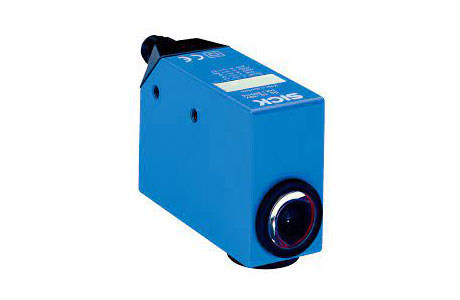Sick Color Sensor: Color Mark Sensor, CS8
Are you searching for a Sick Color Sensor? then you are in the right place we are offering a range of Sick Color Mark Sensors and for some range of Sick Sensors, we will suggest one-to-one equivalent sensors. We can assure our prices are better than Authorized Sick Dealers or Sick Color Mark Sensor distributors in Hyderabad, Bangalore, Chennai, Coimbatore, and India.
Sick Color Sensor: CSS Series
- High Color Resolution: Distinguishes fine color nuances and gradients.
- Sensing Distance: Up to 500 mm with automatic adjustment.
- Display: Full color TFT for color values (Lab or RGB) and similarity comparison.
- Color Storage: Up to 24 colors per task via IO-Link.
- Setup: Easy commissioning with SOPAS software.
Sick Color Sensors: CSM Series
- Sensing Distance: 12.5 mm to 15 mm.
- Housing: Miniature, saving installation space.
- Teach-In Methods: Static and dynamic for accurate detection.
- IO-Link Functions: Intelligent diagnostics, visualization, and remote configuration.
- Optics System: Improved for better detection and higher sensing distance tolerances.
- User Experience: Intuitive teach-in method for ease of use.
Sick Color Mark Sensor: CS8 Series
- Sensing Distance: 12.5 mm or 60 mm options.
- Switching Speed: Up to 6 kHz (85 µsec) for high throughput.
- Precision: Sharp lightspot for consistent detection.
- Display: Bar graph for color quality and reliability.
- Flexibility: Broad color tolerance spectrum.
- Response Time: Fast, reliable at high speeds.
- Housing: Metal with two light exits.
IndMALL Automation offers Sick Color Sensors, perfect for precise color detection in industrial settings. These sensors excel in identifying subtle color variations, essential for quality control and sorting. Our color detection sensors are highly sensitive, ensuring accurate color sensing under various conditions.
They’re user-friendly, easily integrating into existing systems, making them ideal for packaging, automation, or quality assurance. Choose our Sick Color Sensors for their precision, reliability, and adaptability in meeting your color detection requirements.
Product List:
| Model No | Image | Dimensions (W x H x D) | Sensing distance | Light source | Light spot size | Switching output |
|---|---|---|---|---|---|---|
| CSM-WP11122P | 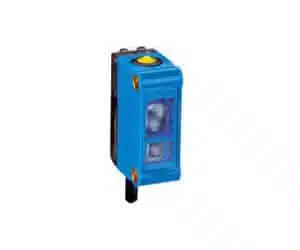 |
12 mm x 31.5 mm x 21 mm | ≤ 12.5 mm | LED, RGB | 1.5 mm x 6.5 mm | PNP |
| CSM-WP117A2P | 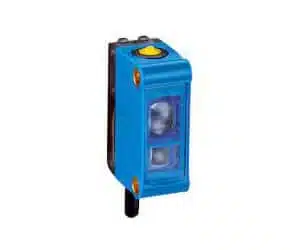 |
12 mm x 31.5 mm x 21 mm | ≤ 12.5 mm | LED, RGB | 1.5 mm x 6.5 mm | PNP |
| CS84-P3612 |  |
30.4 mm x 80 mm x 53 mm | ≤ 60 mm | LED, RGB | 13 mm x 13 mm | PNP |
| CS81-P3612 | 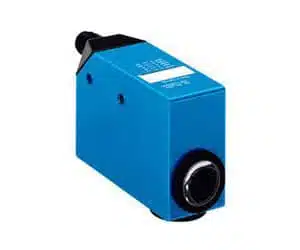 |
30.4 mm x 80 mm x 53 mm | ≤ 60 mm | LED, RGB | 13 mm x 13 mm | PNP |
Frequently Asked Questions
How Many Types of Color Sensors are There?
There are mainly three types of color sensors: RGB (Red, Green, Blue) sensors, which detect color based on the three primary colors; spectral sensors, which analyze the full spectrum of light; and brightness sensors, which detect color intensity.
Each type has specific applications, from industrial sorting to digital imaging and ambient light sensing.
What is the Purpose of the Color Sensor?
The purpose of a color sensor is to detect and differentiate colors in objects or environments. It’s widely used in quality control to ensure color consistency in products, in manufacturing for sorting items, and in automation for identifying parts.
Color sensors also play a key role in robotics and consumer electronics for tasks like screen adjustments and object recognition.
What are the Main Part of a Color Sensor?
The main parts of a color sensor include a light source to illuminate the target, a photodetector to receive the light reflected from the target, and a processing unit. The photodetector typically consists of photodiodes sensitive to different colors, often red, green, and blue.
The processing unit analyzes the detected colors to determine the target’s color characteristics.
If you required Sick Color Sensor, Get a Call: at +91 79955 44066

